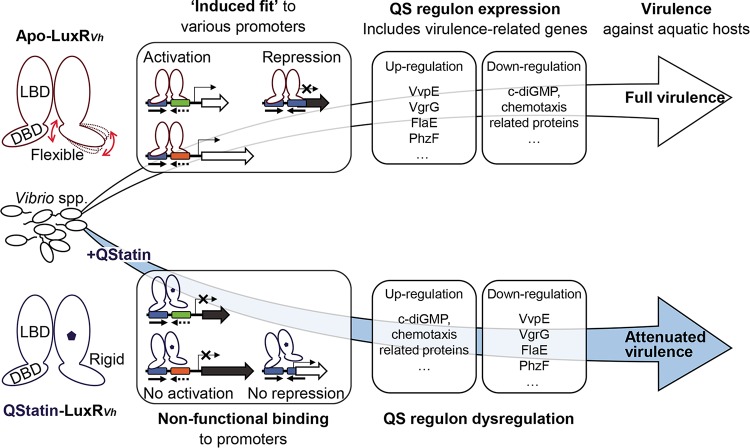FIG 7 .
Proposed molecular mechanism underlying QStatin-induced attenuation of virulence in pathogenic Vibrio species. Due to its flexibility, apo-LuxRVh can functionally interact with various target promoter DNAs, which contain either symmetrical palindrome consensus binding sequences (represented by blue boxes with inverted arrows) or asymmetrical imperfect binding sequences (represented by blue boxes and different colored boxes) via an “induced-fit” mechanism. Virulence-related genes are differentially regulated by LuxRVh-mediated QS, making the vibrios fully virulent against aquatic hosts. In contrast, QStatin-induced reduction of LuxRVh flexibility causes nonfunctional interactions with its target promoter DNAs and results in dysregulation of the LuxRVh regulon. These events eventually attenuate the virulence of Vibrio species against aquatic hosts. LBD, ligand-binding domain; DBD, DNA-binding domain.

